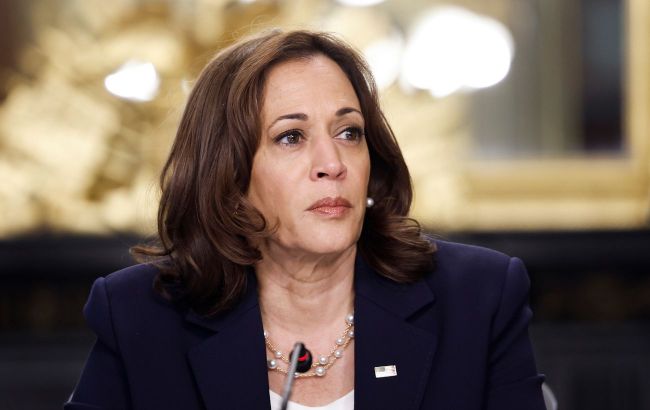Harris can beat Trump thanks to falling petrol prices
 Photo: Harris could beat Trump thanks to falling petrol prices (Getty Images)
Photo: Harris could beat Trump thanks to falling petrol prices (Getty Images)
American motorists will see gasoline prices fall below $3 a gallon for the first time in more than three years next month. This will happen shortly before they vote in the November elections, Reuters reports.
Lower gasoline prices, largely due to weak demand for the fuel and falling oil prices, have come as a relief to consumers who have been struggling with record-high fuel costs that have spurred inflation. The lower prices could also help Vice President Kamala Harris and other Democrats fend off harsh Republican criticism of prices at the pump.
According to the motorists' association AAA, as of September 11, the national average price of regular gasoline was $3.25 per gallon, down 19 cents from a month ago and 58 cents from a year ago.
The average should fall below $3 a gallon by the end of October, if not sooner, as the summer driving season ends and retailers start selling cheaper winter fuel in the coming weeks, said Patrick DeHaan, an analyst with GasBuddy.com. In North Carolina, which is considered a swing state in the November 5 presidential election, prices at the pump have already fallen below $3 ($1.26 per liter).
"Americans will definitely remember the price they see when they drive into polling stations, so this is definitely good news for Harris in her campaign for president against Republican Donald Trump," De Haan says.
Dependence of rating on petrol prices
Research by the Wells Fargo Investment Institute, among others, shows that US presidential approval ratings are inversely proportional to petrol prices. Therefore, falling prices should boost the Democrats in this election cycle, says John LaForge, head of real asset strategy at the investment advisory firm.
Presidents don't have any direct influence on gasoline prices, which move based on global supply and demand. Prices have fallen sharply this year as demand has been weaker than expected, especially in the US and China. Brent crude oil fell from over $90 per barrel in April to a near three-year low of $70 on Tuesday.
An unforeseen circumstance was Hurricane Francine, which hit US offshore oil fields on Wednesday, causing crude oil prices in the US to rise by more than $2 a barrel on fears of a prolonged production shutdown.
In 2022, oil prices hit a record high of more than $5 per gallon, largely due to supply shocks following Russia's invasion of Ukraine at a time when global demand for fuel surged as COVID-19 quarantine measures were eased.
According to Brian Kessens, senior portfolio manager at investment firm Tortoise, supply has been more stable this year, which has helped to drive down refined product prices as refineries have been running at higher rates.
This year's demand for gasoline in the US is expected to average 8.92 million barrels per day, which is about 20,000 barrels per day less than last year. Earlier, it was expected that demand in 2024 would be the same as last year.
However, this level represents 9% of global oil demand and makes the US the largest fuel consumer in the world. This gives the dollar-per-gallon figure extra visibility in any government's scorecard.
Strengthening Harris
Republicans have repeatedly blamed President Joe Biden's policies for the sharp rise in gasoline prices and inflation during his administration, but De Haan said these attacks are losing their edge due to the rapid decline in gasoline prices.
Consumer prices rose by 2.5% in the 12 months to August, the slowest year-on-year increase since February 2021, Labour Ministry data showed. The data showed that petrol prices fell 10% from a year earlier, the biggest annual drop since July 2023. Petrol prices, as measured by the Consumer Price Index, have not risen since April.
According to Tom Kloza, head of energy analysis at Oil Price International Service, the impact of low gasoline prices is likely to be most pronounced in swing states that will ultimately determine the outcome of the election.
According to AAA, the average price in North Carolina fell to $2.983 per gallon, and in Wisconsin to $3.043.
According to AAA's Andrew Gross, diesel prices, a less visible but arguably more important indicator of a country's economic health, are also following a similar trajectory due to weak demand and high supply.
Diesel fuel is primarily used in the production and transportation of goods, but higher costs passed on to consumers could lead to higher prices for everything from eggs to televisions.
According to the EIA, by September 9, national average diesel prices had fallen to $3.56 per gallon, down 32 cents from the start of the year and the lowest since October 2021.
"Whoever the next President is, they will definitely benefit from lower fuel prices and some serious deflation," says Kloza.

